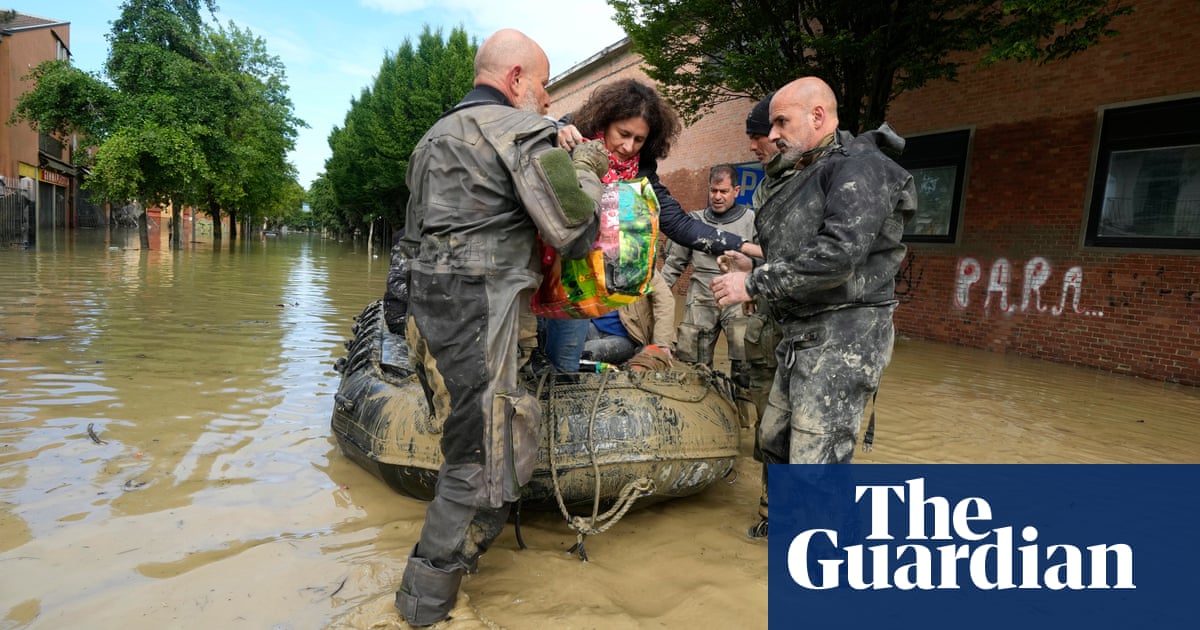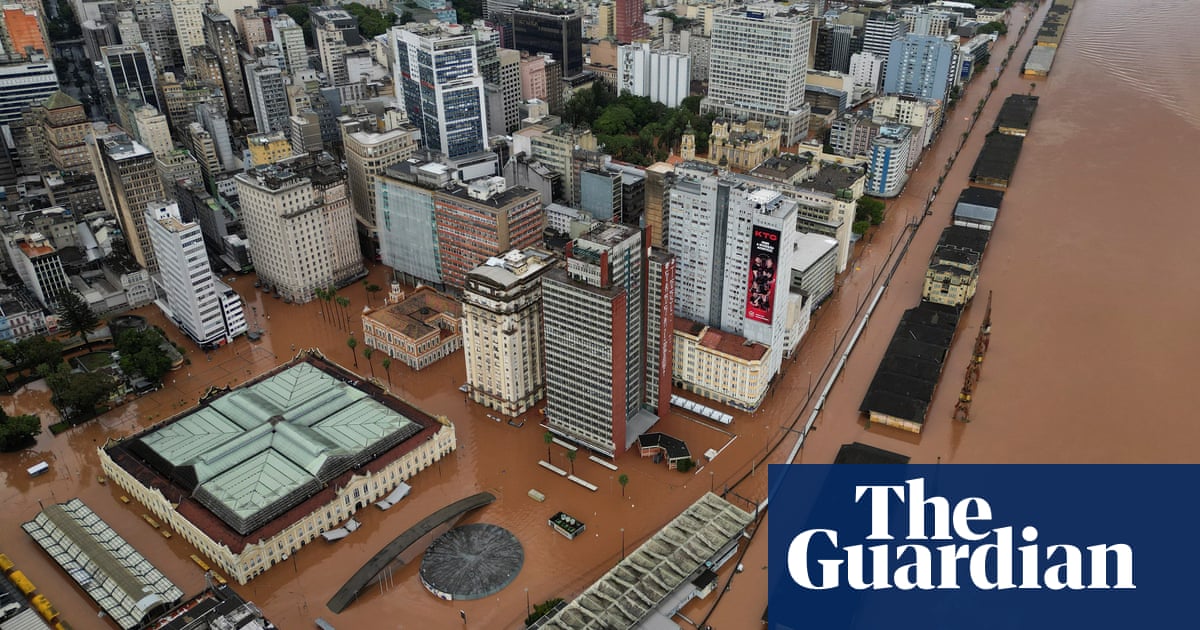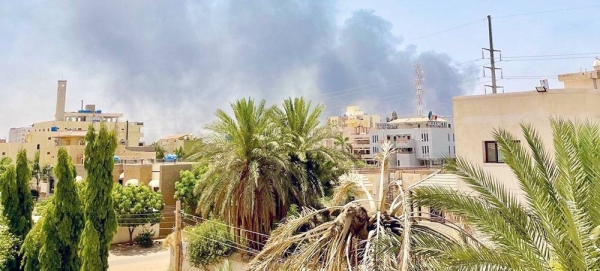
Older and disabled people were trapped in their homes as rescuers worked under pounding rain throughout the night to save people in the most catastrophic flooding to affect Italy in 100 years.
The floods in the northern Emilia-Romagna region have claimed 13 lives as of Thursday evening. An estimated 20,000 have been left homeless in a disaster that caused 23 rivers to burst their banks and 280 landslides, engulfing 41 cities and towns.
Roads remained blocked, including the A1, after a landslide in Sasso Marconi on Thursday afternoon, and trains were cancelled or disrupted.
Among the dead were an elderly couple trapped inside their home in Cava, a hamlet in the province of Forlì-Cesena. “We heard their cries for help,” a neighbour told Il Messaggero newspaper. “We tried to get them out, but it was useless.”
An 80-year-old man drowned in his cellar after going to retrieve belongings, and a couple, identified as Sauro Manuzzi and Marinella Maraldi, who owned a company that produces herbs, were hit by the floods in the field opposite their home. The body of Maraldi, 70, was swept 12 miles down a river before being found on a beach along the Adriatic coast. A 76-year-old man was killed after being hit by a landslide in his garden, while another man, aged 43, died after falling into a well while trying to pump water away from his property.
Firefighters have carried out 2,000 rescue operations across the region and in parts of central Marche that were also affected by the floods.
Forty elderly people were saved from a care home overnight as police were inundated with calls seeking help. A caller in Faenza, among the worst-hit towns, told police: “My neighbours are elderly. One has Alzheimer’s. They’re unable to leave by themselves. Somebody must come. There’s too much mud.”
Elderly people who sought refuge on rooftops were saved by helicopters, as were entire families. Volunteers described carrying people out of their homes. Paolo Meoni, a volunteer working in Cesena, told La Nazione newspaper: “We worked all night in the pouring rain. In some cases, we carried the elderly and disabled in our arms and brought them on a dinghy to rescuers, who in turn transported them to shelters.”
He added: “The water was 40cm high, but the heavy rain, which lasted until 6am, made things worse.”
Stefano Bonaccini, the president of Emilia-Romagna, compared the devastation to the earthquake that hit the region in 2012 in which 28 people died. “The damage will be quantitatively smaller, but it will be a few billion euros,” he told Rai 3 television. “We will rebuild everything as we did for the earthquake.”
The floods have destroyed homes and shops and left more than 5,000 farms under water, according to Coldiretti, Italy’s largest agricultural association.
The owner of a shop in Faenza that has been selling kitchen equipment since 1950 told Ansa news agency: “We’ve been cleaning up since 6am, I don’t know what time we’ll finish. I live outside Faenza and in 2014 there was a flood, but nothing like this – I’ve never seen anything like this one, nobody here has.”
The situation in Cesena, which was also badly hit, had slightly improved by Thursday afternoon. “There are almost no more areas that are flooded,” said Matteo Raggi, a spokesperson for the mayor of the Forlì-Cesena region, Enzo Lattuca.
“Mud remains … we are now cleaning the waste from the streets. The big problem is the hillside areas that have been hit by landslides and trying to reach people there – many have been cut off because of the landslides but also because there is no mobile phone reception. Some have no food.”
Pierluigi Randi, the president of Ampro, the association of weather experts, told La Repubblica it was the worst flood to affect Italy in a century. It followed flooding in Emilia-Romagna and parts of Marche in early May in which two people died. Six months’ worth of rain fell in two weeks.
“We need to prepare ourselves, this is the climate crisis,” Randi said.
Before the floods, Emilia-Romagna and other areas of northern Italy were blighted by a drought that dried out land, reducing its capacity to absorb water.
In 2022, the hottest year on record in Italy, 310 extreme weather events were registered, causing the deaths of 29 people, according to Legambiente, an environmental group. Thirteen people were killed in floods in Marche last September and 12 people, including several children, died in a landslide on the island of Ischia in late November.
“The only new thing to say about the latest floods is that two records were broken in 15 days in the same region,” said Luca Mercalli, the president of the Italian Meteorological Society. “An event like the one that occurred on 2 May might happen once in a century, but then another hit 15 days later – having two occasions of intense rain within such a short timeframe, and in the same region, is what is really surprising.”












